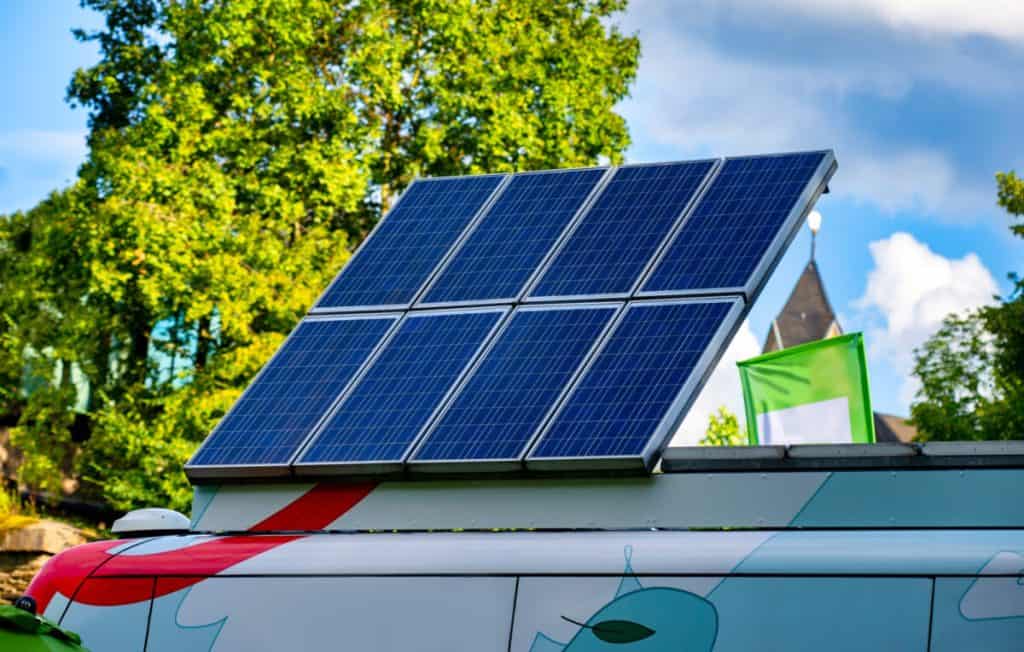You’re thinking about converting to an RV solar panel, but where do you begin? You don’t need to go any farther, since this guide will cover all you need to know to accurately determine your solar array and battery bank requirements.
We’ll do this in three parts, which involve sizing your battery bank, figuring out your power requirements, and figuring out your solar demands.
Your Battery Bank’s Size
Add up the daily energy use of all the appliances in your RV, like in the example below, to determine how much energy you will need for an RV solar panel.
By doing a fast Google search or by reading the labels on your equipment, you may obtain typical watt rates.
In the expanded example below, 139 amp-hours are required everyday in total.
Amp Hour Calculation: Watt Hours ÷ Volts = Amp Hours

Batteries are rated in watt-hours or amp-hours, as was previously indicated.
In this case, you would need a battery or bank of batteries with a combined capacity more than 139 amp-hours or a method of charging at a pace that is at least as quick as the rate of consumption.
Keep in mind that these figures are for everyday usage.
Estimating Battery Power Requirements
Determine the maximum electricity your RV solar panel will need in the second phase.
According to the aforementioned example, 139 total amp hours are required daily; nevertheless, it’s crucial to additionally take your battery’s capacity for continuous and peak discharge current into account.
If all appliances were running simultaneously, you might calculate the current in amps by adding up the total watts and dividing by the battery’s voltage: (2,356 watts 12.8 volts = 184.1 amps).
Current Calculation: Watts ÷ Volts = Current

You should restrict the number of appliances utilized at once or increase the number of batteries you have connected in parallel if your current in amps exceeds the continuous rating of your battery.
The battery’s monitoring system (BMS) will shut down the battery if you exceed the peak current rating for a longer period of time than is advised.
Remember that certain appliances need more power to start, which temporarily raises your current need.
The gadget won’t operate if you don’t have enough current to cover beginning.
You’ll need a dependable way to refill what you consume if you want a steady supply of daily electricity, which takes us to how big your RV solar panels should be.

Choosing the Right Solar Power System for Your RV
Solar panels typically range in power from 100 to 300 watts.
The highest efficiency is the basis for panel watt ratings.
The amount of energy that solar panels can produce depends on the temperature, the environment, and the time of day.
For every 100 watts of solar panels you have, you will produce around 30 amps of electricity.
This serves as a basic rule of thumb for panel buying.
When comparing panels, look for the output power or maximum current rating; the majority will fall between 5.3 and 5.7 amps.
Every 100 watts 5.5 amp panel will produce 33 amp hours per day (5.5 amps x 6 hours = 33 amp hours) assuming there are six useful hours of sunshine each day.
You would need an array of panels rated at 500 watts in order to replace the energy utilized in the longer example above (139.1 amp hours).
By using the rule of thumb that each panel will generate around 30 amp-hours per day under ideal circumstances, we arrive at this computation.
If five 100 watt panels are used, the coverage of the estimated 139 amp-hours is provided by five panels multiplied by 30 amp hours each day, or 150 total amp hours.
Despite the fact that 150 amp-hours would provide the daily minimum need, it’s a good idea to enlarge your array to provide a safety net.
It’s a good idea to add 20–25 percent capacity over your needs, depending on how dependent you are on solar energy as your sole source, to ensure that you won’t run out of power on a cloudy day or if you consume more energy than you anticipated.










